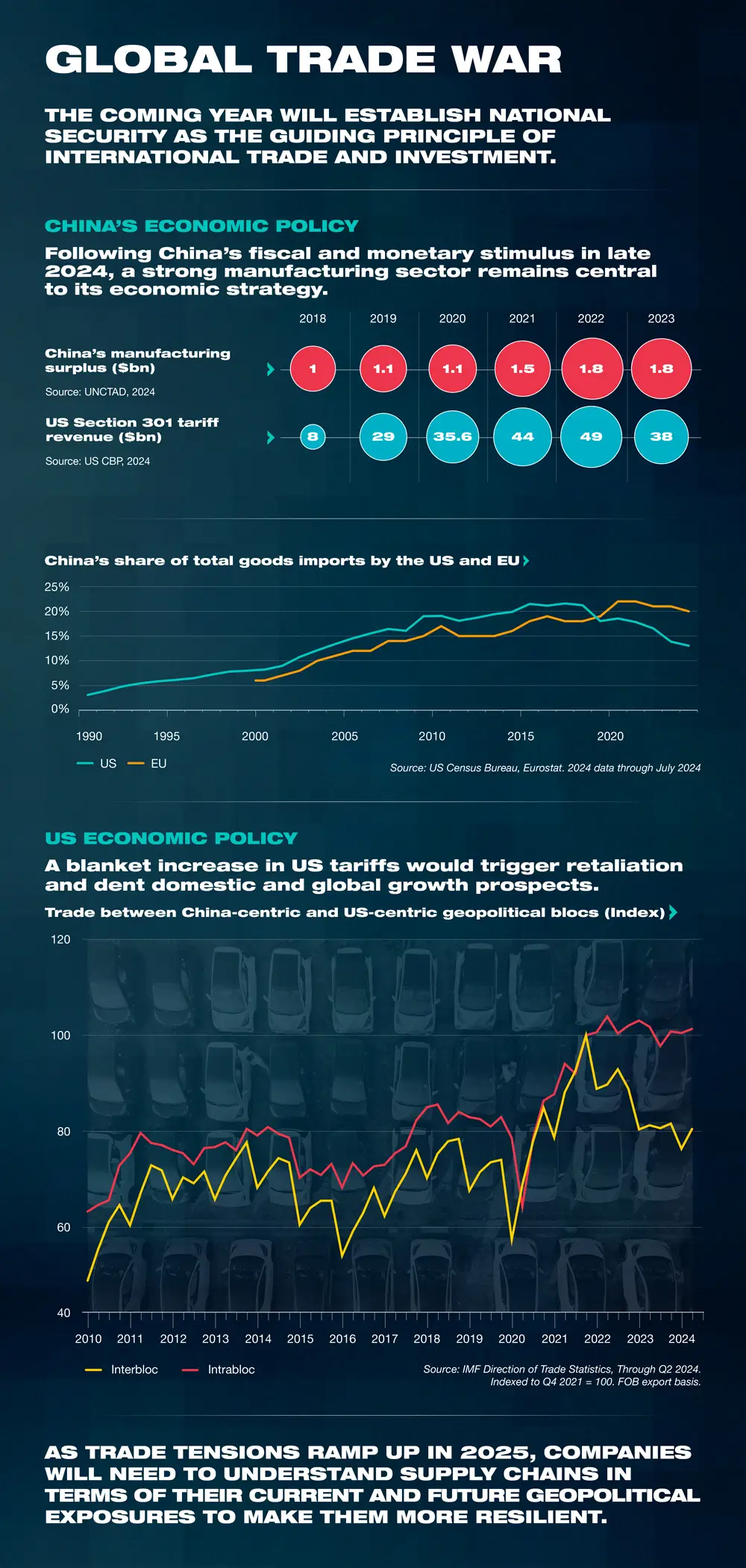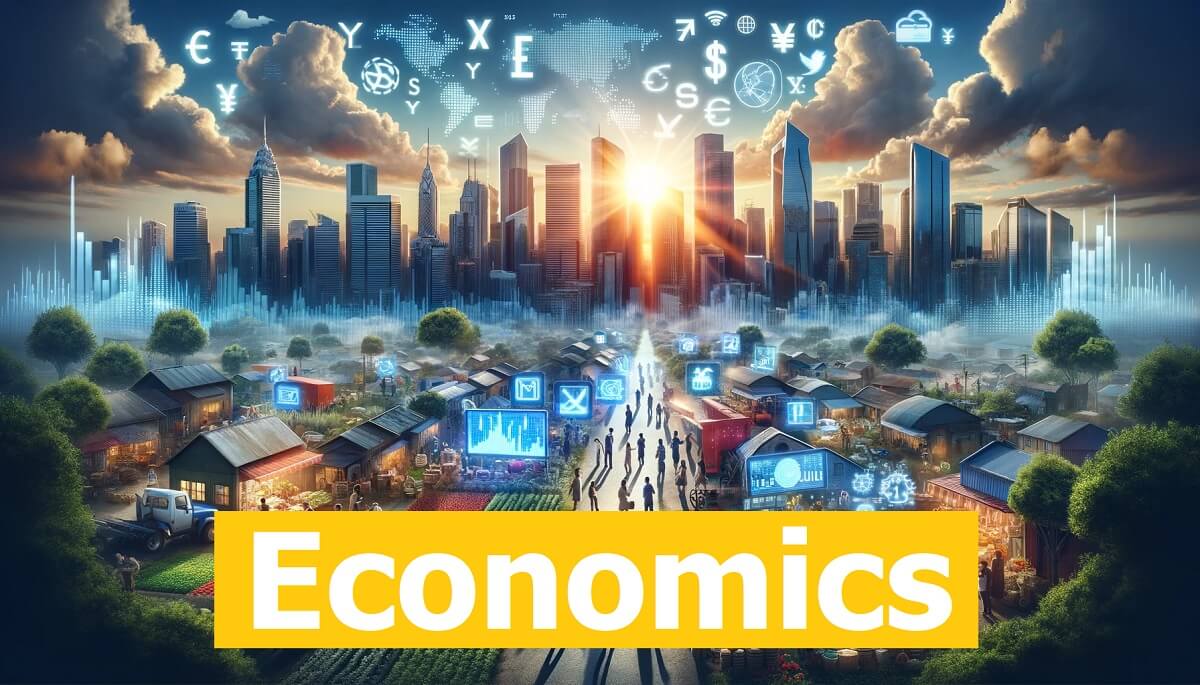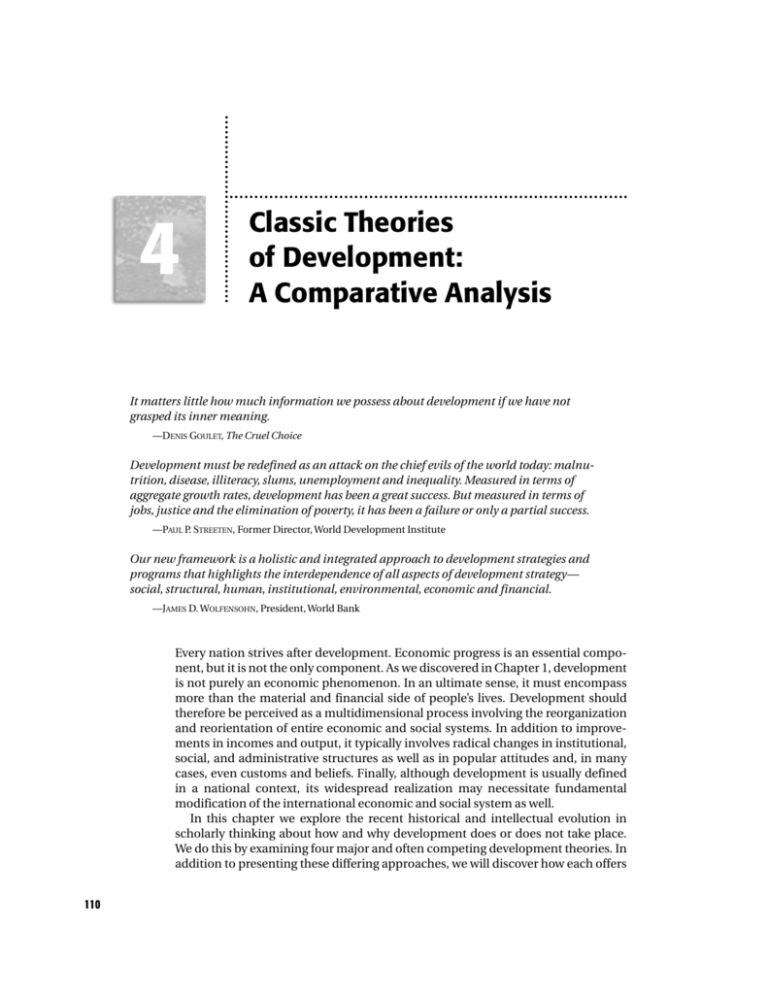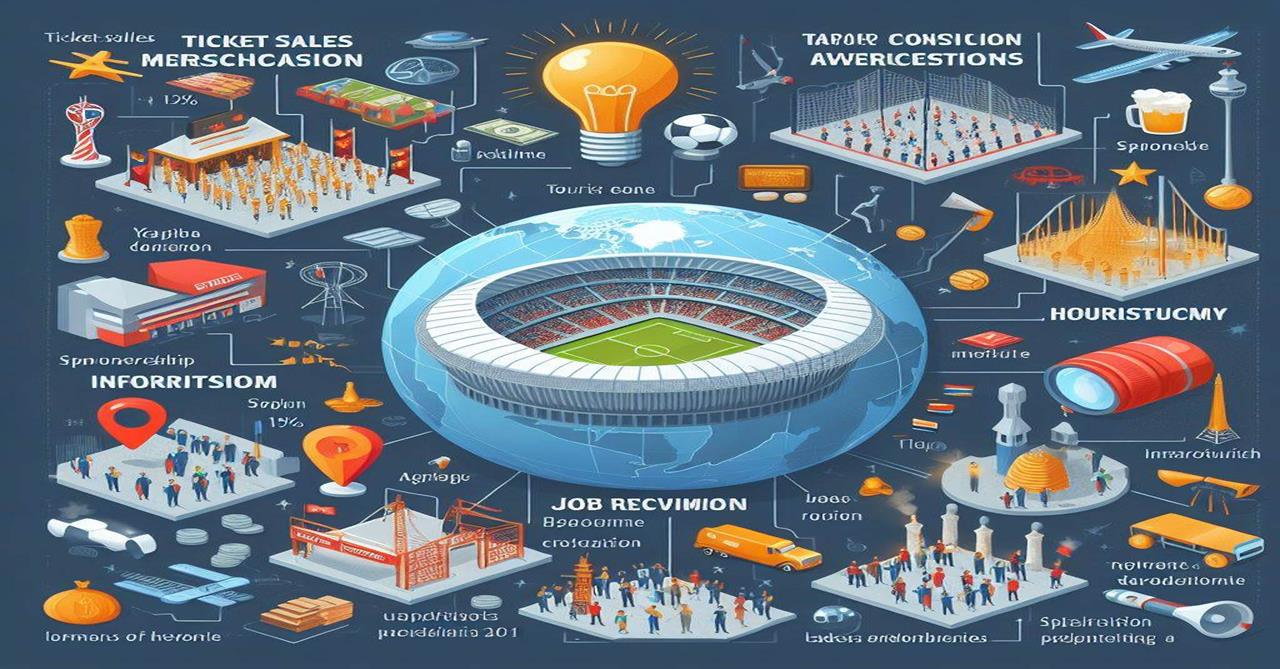
Global Trade Wars: Historical Context and Future Risks – A Beginner’s Guide
Have you ever wondered what happens when countries don’t play nice in the global marketplace? When nations raise their fists (economically speaking) and impose barriers on each other’s goods, the result is often a "trade war." Far from being just a dry economic concept, trade wars can have a profound impact on everything from the price of your favorite sneakers to the stability of global peace.
In this comprehensive guide, we’ll break down what global trade wars are, why they happen, how they’ve shaped history, and what potential risks they pose for our future. We’ll make sure it’s easy for anyone to understand, even if you’re new to the world of economics.
What Exactly is a "Trade War"? Understanding the Basics
At its heart, a trade war is a conflict between two or more countries where they impose tariffs or other trade barriers on each other’s goods, in retaliation for similar actions. Think of it like an economic standoff.
Key Terms You Need to Know:
- Tariffs: This is a fancy word for a tax on imported goods. When a country imposes a tariff, it makes products coming from another country more expensive. For example, if Country A puts a 25% tariff on cars from Country B, those cars will cost 25% more for Country A’s consumers.
- Quotas: This refers to a limit on the quantity of certain goods that can be imported. So, Country A might say, "You can only sell 100,000 cars here per year, no matter what."
- Subsidies: These are financial aid or support given by a government to certain industries or businesses. While not a direct trade barrier, subsidies can distort trade by making a country’s products artificially cheaper and more competitive in the global market, leading to complaints from other countries.
- Non-Tariff Barriers (NTBs): These are sneaky ways countries can restrict trade without using direct taxes or limits. Examples include:
- Strict regulations: Making it very hard for foreign products to meet local safety or environmental standards.
- Complex customs procedures: Delays and mountains of paperwork that make importing a nightmare.
- Embargoes: A complete ban on trade with a particular country, often for political reasons.
Why Do Countries Start Trade Wars?
Countries usually engage in trade wars for a few main reasons:
- Protecting Domestic Industries: Governments might believe that foreign competition is hurting their local businesses and leading to job losses. By making imported goods more expensive, they hope people will buy more locally produced items. This is often called protectionism.
- Addressing "Unfair" Practices: A country might accuse another of unfair trade practices, such as:
- Dumping: Selling goods in a foreign market at prices below their production cost (or below their price in their home market) to gain market share.
- Intellectual Property (IP) Theft: Stealing designs, patents, or trademarks.
- Currency Manipulation: Deliberately making their currency cheaper to make their exports more attractive.
- National Security Concerns: Sometimes, a country might restrict trade in certain strategic goods (like technology or rare earth minerals) if they believe relying on another nation for these items poses a security risk.
- Political Leverage: Trade barriers can be used as a bargaining chip in broader diplomatic negotiations.
A Walk Through History: Past Trade Battles and Their Lessons
Trade wars are not a new phenomenon. They have been a recurring feature of global relations for centuries, often with significant consequences.
Early Examples: Mercantilism and Beyond
Before the modern era, many empires operated under a system called Mercantilism. This idea held that a nation’s wealth and power were best increased by maximizing exports and minimizing imports, often by imposing high tariffs. This frequently led to trade disputes and even actual wars, as countries vied for dominance and exclusive access to markets and resources.
The Infamous Smoot-Hawley Tariff Act (1930)
One of the most famous and devastating examples of a trade war in modern history is the Smoot-Hawley Tariff Act in the United States.
- What happened? In an attempt to protect American farmers and industries during the Great Depression, the U.S. Congress passed this act, significantly raising tariffs on over 20,000 imported goods.
- The Reaction: Other countries quickly retaliated by imposing their own tariffs on American products.
- The Impact: This tit-for-tat trade war dramatically reduced global trade (some estimates say by as much as 66% between 1929 and 1934). It deepened and prolonged the Great Depression worldwide, contributing to widespread economic hardship and international tensions. It’s widely seen as a cautionary tale of how protectionism can backfire.
Post-WWII: Towards Cooperation (GATT & WTO)
After the devastation of World War II, world leaders recognized the importance of economic cooperation to prevent future conflicts. This led to the creation of:
- The General Agreement on Tariffs and Trade (GATT) in 1947: This was a series of agreements aimed at reducing tariffs and other trade barriers through multilateral negotiations (many countries talking together).
- The World Trade Organization (WTO) in 1995: The WTO replaced GATT and became the international body overseeing global trade rules. Its main goals are to:
- Help trade flow as smoothly, predictably, and freely as possible.
- Provide a forum for trade negotiations.
- Offer a mechanism for resolving trade disputes between member countries.
For decades, the GATT and later the WTO helped foster an era of increasing free trade, where goods could move more easily across borders, leading to global economic growth.
Recent History: The Return of Trade Tensions
Despite the framework of the WTO, trade tensions have flared up significantly in recent years.
- US-China Trade War (2018 onwards): This is perhaps the most prominent recent example. The U.S. imposed tariffs on billions of dollars worth of Chinese goods, citing concerns over intellectual property theft, forced technology transfer, and trade imbalances. China retaliated with its own tariffs on U.S. products. This conflict disrupted global supply chains and created uncertainty for businesses worldwide.
- Brexit and Trade Deals: The UK’s departure from the European Union also created complex trade challenges, as new trade agreements (or lack thereof) had to be negotiated, leading to friction in various sectors.
- Disputes in Specific Sectors: Even within generally free-trade environments, specific industries often face trade disputes, such as those concerning steel and aluminum, agricultural products, or aircraft manufacturing, often involving subsidies or dumping accusations.
The Ripple Effect: Who Gets Hurt in a Trade War?
While the initial intent of a country starting a trade war might be to protect its own industries, the reality is that the consequences often ripple far and wide, hurting many more people than intended.
1. Consumers Pay More
- Higher Prices: When tariffs are imposed on imported goods, those goods become more expensive. This cost is usually passed on to consumers. So, that imported television, car, or even a basic ingredient for your food might cost more.
- Less Choice: With fewer imports, consumers might have fewer options to choose from, or they might be forced to buy lower-quality or less innovative domestic products.
2. Businesses Suffer
- Increased Costs: Companies that rely on imported parts or materials face higher production costs, which eats into their profits or forces them to raise prices.
- Supply Chain Disruptions: Modern global supply chains are complex webs. A tariff on one component can throw off an entire production line, leading to delays and inefficiencies. Businesses might have to scramble to find new suppliers, which is costly and time-consuming.
- Reduced Exports: Businesses in the country that initiated the tariffs might see their own exports decline if other countries retaliate with tariffs on their goods. This can lead to reduced sales and market share.
- Uncertainty: Trade wars create a highly unpredictable business environment. Companies become hesitant to invest, expand, or hire new workers when they don’t know what the trade rules will be next week or next month.
3. Workers Face Job Losses
- Declining Exports: If companies can’t sell their goods abroad due to retaliatory tariffs, they might reduce production and lay off workers.
- Shifting Industries: While some domestic industries might see a temporary boost from protection, others, especially those reliant on exports or imported components, could suffer significant job losses.
4. Global Economy Slows Down
- Reduced Trade Volume: Trade wars inherently reduce the amount of goods and services exchanged between nations, which is a drag on global economic growth.
- Lower Investment: Businesses and investors become more cautious, leading to reduced foreign direct investment across borders.
- Increased Instability: Economic uncertainty can spill over into financial markets, leading to volatility and making planning difficult for everyone.
5. Specific Sectors are Hit Hard
- Agriculture: Farmers are often among the first to feel the pinch. If a country puts tariffs on agricultural products, those farmers lose critical export markets.
- Manufacturing: Industries that rely on complex global supply chains (like electronics or automobiles) are particularly vulnerable to disruptions.
Beyond Economics: Geopolitical and Social Risks
The impact of global trade wars isn’t limited to just economics. They can have far-reaching consequences for international relations and social stability.
1. Increased International Tensions
- Damaged Relationships: Trade disputes can quickly sour diplomatic relations between countries, making it harder to cooperate on other important global issues like climate change, terrorism, or pandemics.
- Reduced Trust: When countries engage in aggressive trade tactics, it erodes trust and makes future cooperation more difficult.
2. Weakening of International Institutions
- WTO Under Strain: Trade wars often involve countries bypassing or challenging the rules of the WTO. If countries ignore these rules or refuse to resolve disputes through the WTO, it weakens the organization’s authority and effectiveness, potentially leading to a more chaotic global trading system.
- Rise of Bilateralism: Instead of multilateral agreements (many countries working together), there’s a risk of countries retreating into bilateral deals (two countries only), which can create a less fair and more fragmented global trade landscape.
3. Impact on Developing Nations
- Vulnerability: Smaller, developing economies are often more vulnerable to the whims of major economic powers. They might become collateral damage in trade wars between larger nations, finding their nascent industries or agricultural exports suddenly shut out of markets.
- Reduced Aid & Investment: Economic instability caused by trade wars can reduce foreign aid and investment flows to developing countries, hindering their growth and poverty reduction efforts.
4. Potential for Wider Conflicts
While trade wars rarely escalate directly into military conflicts, they can contribute to a climate of mistrust and antagonism that makes other disputes more likely to escalate. Economic grievances can fuel nationalist sentiments and make populations more receptive to aggressive foreign policy stances.
5. Social Unrest
Economic hardship caused by trade wars – like job losses, rising prices, or business failures – can lead to social discontent, protests, and political instability within affected countries.
Navigating the Future: Potential Scenarios and Solutions
The future of global trade wars is uncertain, but several scenarios and potential solutions are being discussed.
Potential Scenarios:
- Continued Escalation: Countries might continue to use tariffs and trade barriers as tools of economic warfare, leading to a more fragmented and less efficient global economy.
- De-escalation and Negotiation: Countries might realize the high costs of trade wars and return to the negotiating table, seeking compromises and renewed commitment to multilateral trade rules.
- "Friend-Shoring" or "Near-Shoring": Companies might choose to move their supply chains away from potentially adversarial nations to more politically aligned countries (friend-shoring) or closer to home (near-shoring) to reduce geopolitical risks, even if it’s less economically efficient.
- Regional Blocs Strengthen: The global trading system might increasingly splinter into powerful regional trade blocs (e.g., North America, Europe, Asia), each with its own rules and limited interaction with others.
Potential Solutions and Ways Forward:
- Strengthening the WTO: Reforming and reinforcing the WTO’s dispute settlement mechanism and rule-making capacity is crucial to providing a neutral forum for resolving trade disputes.
- Multilateral Cooperation: Countries need to prioritize dialogue and negotiation over unilateral actions. Engaging in good-faith discussions to address legitimate trade grievances can prevent escalation.
- Addressing Root Causes: Rather than just imposing tariffs, countries need to work together to address underlying issues like intellectual property theft, unfair subsidies, or market access restrictions through international agreements and enforcement.
- Diversifying Supply Chains: Businesses are already learning lessons from recent disruptions and looking to diversify their supply chains, reducing over-reliance on any single country.
- Focus on Shared Prosperity: Governments and businesses need to remember that global trade, when fair and open, can be a powerful engine for innovation, economic growth, and poverty reduction for all nations involved.
Conclusion: The Path to Peace Through Trade
Global trade wars, driven by a complex mix of economic protectionism, national security concerns, and political leverage, have a long and often damaging history. From the devastating impact of the Smoot-Hawley Tariff to the recent US-China trade tensions, the lessons are clear: while sometimes intended to protect, these conflicts often lead to higher prices for consumers, reduced profits for businesses, job losses, and a significant slowdown in global economic growth.
More than just economic skirmishes, trade wars erode trust between nations, strain international institutions like the WTO, and can contribute to a more unstable and unpredictable world. For a future of shared prosperity and peace, nations must prioritize dialogue, adhere to agreed-upon trade rules, and work collaboratively to address grievances. Only through cooperation, rather than confrontation, can the global economy truly thrive and avoid the costly battles of the past.




Post Comment